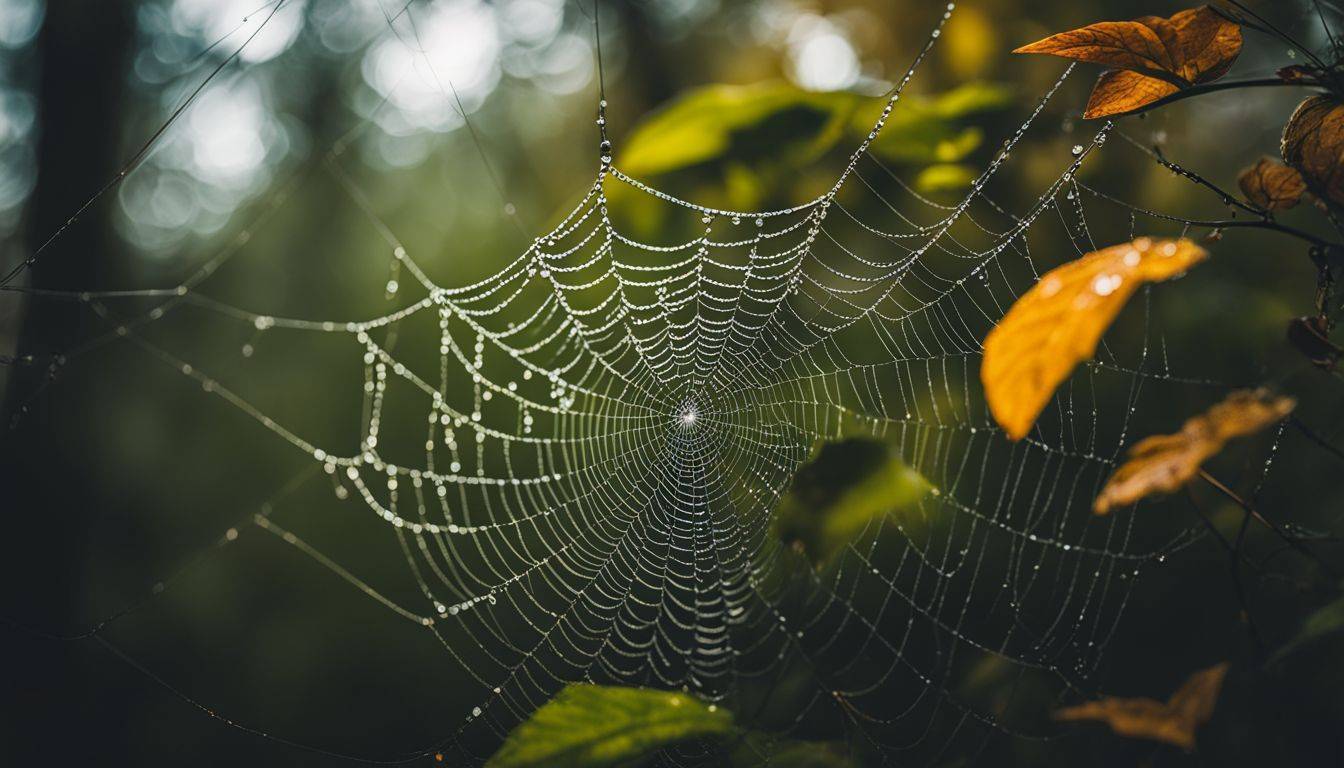Are your efforts in SEO optimization not yielding the desired results? Despite all your efforts, one crucial aspect that might be slowing you down is crawlable links. This blog post will demystify everything you need to know about these essential components of SEO, their impact on your site’s performance, and how to create them effectively.
Ready to up your game and enhance your website’s visibility? Let’s dive in!
Key Takeaways
- Crawlable links let search engine robots find your blog. When Google can visit and read your pages, they appear in more web searches.
- You need to tell the difference between crawlable and non-crawlable links. Search engines use crawlable links but stop at non-crawlable ones.
- Having many crawlable links on your site helps it show up higher in search results. It makes you beat other blogs!
- Use tools like SEO Spider and Link Whisper to check if your site has good quality, easy-to-use links.
Understanding Crawlable Links

“Crawlable links are a vital component of SEO optimization, acting as pathways for search engine crawlers to navigate and index web content; here we will explore what they are, the difference between crawlable and non-crawlable links, their impact on SEO efforts, and delve deeper into this topic with useful resources.”
Definition and significance
Crawlable links are keys to your blog’s success. They let search engine crawlers get into your site and read it. Google uses these links to find out what the page is about. Your blog pops up in more searches when Google can use crawlable links well.
So, you must think of crawlability when doing website optimization and SEO work. It will make your blog better known on the web!
Differentiating between crawlable and non-crawlable links
Crawlable links help search engines find your page. They are like a map for engine robots. These robots use such links to crawl the web and index new content. But, not all links are crawlable.
Non-crawlable ones stop these same robots in their tracks. The result is they can’t reach or index the linked pages. Can you tell the difference? You want to pick the right one! A lot rides on it, from your SEO ranking power to how easy people can find what you put online.
Impact of crawlable links on SEO optimization
Crawlable links make a big difference in SEO optimization. They help Googlebot find new content on your blog. This is how it works: the bot starts by looking at a few pages, then follows the links on those pages to discover more.
If these links are not crawlable, the bot can’t find your content.
Having lots of crawlable links also helps with ranking and indexing. Your page has a better chance of showing up in search results if all its links are easy for bots to follow. It even helps you beat your competitors! So, give crawlable link making a try – it’s good for SEO and can boost your blog’s success.
Deep Dive into Crawlable Links
The page you see at https://whytobuythis.com/online-business/crawlable-links/ gives more info on crawlable links. It tells us how Google uses these links to find new pages. They help in page crawling and increase indexing speed too.
The site explains why non-crawlable links can’t be seen by crawlers. With more crawlable links, your site gets found faster and easier by the search engine! This boosts your page relevancy and website visibility as well in search results ranking.
So, for better SEO optimization, get to know your crawlable links well!
Factors Affecting Link Crawlability

Explore the various elements that influence whether a link is crawlable, dive into common issues that hinder link crawlability and how to resolve them. Learn robust measures to assess if your links are truly crawlable.
Keep reading for in-depth knowledge!
Common issues and solutions
First, let’s talk about some common issues with link crawlability and how to solve them.
- SEO problems: These often occur when search engine spiders find it hard to crawl your website. To fix this, talk to an SEO expert who can root out the issue.
- Internal linking troubles: Sometimes, your website’s inner links can cause problems. When this happens, get help from an SEO pro to clear up the issue.
- Wrong redirects: These can make crawling tricky and hurt your rankings. Double-check your redirects to make sure they’re right.
- Robotstxt files issues: These files might stop search engines from seeing your site. Look at them closely and fix any problems you see.
- Nofollow links: These tell search engines not to follow a link, which can be bad for your site’s architecture. Try not to use nofollow links if you can help it.
How to assess if a link is crawlable
Start checking your links to see if they are crawlable. Follow these steps:
- Use online tools. A tool like SEO Spider can help. It checks your site for broken links.
- Look at your robotstxt file. If it blocks search engines, it stops your link from being crawlable.
- Test with Google Search Console. This tool shows if Google can read your link.
- Check link quality too. Bad links hurt SEO.
- Keep an eye on web content changes as these may affect link crawlability.
Ensuring Your Links Are Crawlable
Step up your SEO game by ensuring all your links are crawlable. Discover pro tips for creating accessible links and explore handy tools like Link Whisper, designed to help you thrive in the digital landscape.
Can’t wait to dive deeper? Keep reading!
Tips for creating crawlable links
Making your links crawlable is important for SEO. You can take these steps to do that:
- Use an internal linking strategy. This can help make your site easier to crawl and index.
- Check all your links. Make sure they are not broken as this can hurt crawlability.
- Place important pages higher on your website. This can give them more value in the eyes of search engines.
- Add more internal links when you can. This can make it easier for search engines to find all your content.
- Build your site with a clear structure in mind. It should be easy for people and search engines to navigate.
- Use tools like Link Whisper to check how well your links are doing.
- Always focus on making a good user experience with the navigation of your site.
Utilizing tools like Link Whisper
Link Whisper is a great tool for bloggers. It helps to make sure your links get found by search engines. This tool makes link building easy and fast. It uses smart tech to find the best places on your blog for new links.
Using Link Whisper can boost your SEO strategy. Its way of optimizing anchor text helps raise keyword rankings. The tool also improves website optimization and discoverability, keys in driving more traffic to your site.
The use of this tool is like giving a map to search engine crawlers. They can find and index the pages on your site with ease using these internal links as guides or signals. Even Google values these crawlable links while deciding how useful a page is! Try Link Whisper today and build crawlable paths around your blog that lead straight to higher search engine rankings.
Best Practices for Crawlable Links
Discover the essential link best practices endorsed by Google and learn why crawlable links are pivotal in SEO. Don’t miss our upcoming events and resources for a deep dive into effective link building strategies! Keep reading to unravel more.
Google’s link best practices
Google has a set of rules for making good links. Bloggers should know these rules.
- Make your links crawlable. This means that search engines can find and read them. Use an HTML element with an href attribute in your links.
- Aim for high – quality links. Google says the quality of your links is vital.
- Keep your site structure easy to crawl. A search engine needs to reach all parts of your website.
- Help the search engines index your content. When they can do this, they put your pages in the search results.
- Use tools like Link Whisper to help you make good links.
- Follow all of Google’s guidelines for crawlable links.
- Pay attention when Google makes new rules about links and SEO optimization.
Importance of crawlable links in SEO
Crawlable links are key to SEO. They help search engine bots find and index your website’s pages. This gives you better visibility in search results. You improve your site’s performance with crawlable links too.
Search engines use these links to figure out what the content is about. But, they stop crawling after around 150 links on one page. So, all your links must count! For good SEO optimization, make sure that all of your website’s links can be read and followed by crawlers.
Upcoming events and resources for further learning.
There are many upcoming events and tools that can help you learn more about crawlable links.
- Google Webmaster Central Blog: This blog offers the latest news on SEO best practices. You’ll get tips right from Google’s home office.
- SEO Meetups: These local events provide chances to mix with other bloggers. You can pick up top tips and make new friends.
- MozCon Virtual 2022: Join this online event. Experts share their views on SEO, link building, and website crawling.
- SEMrush Academy: This digital platform offers free courses on SEO. You get to learn crawlability and indexing too.
- Siteimprove SEO Webinars: These webinars teach how search engines rank pages. You also understand how to create crawlable links.
- Ahrefs Blog: This blog puts out many articles every week about SEO authority and keyword optimization.
- Link Whisper Tool is a plugin for bloggers that helps build internal links fast and easy.
Conclusion
Crawlable links guide search engines to explore your site. They help get your pages on the web map. Make sure all important links can be found and followed by crawlers. This helps boost your website’s standing in search results.
